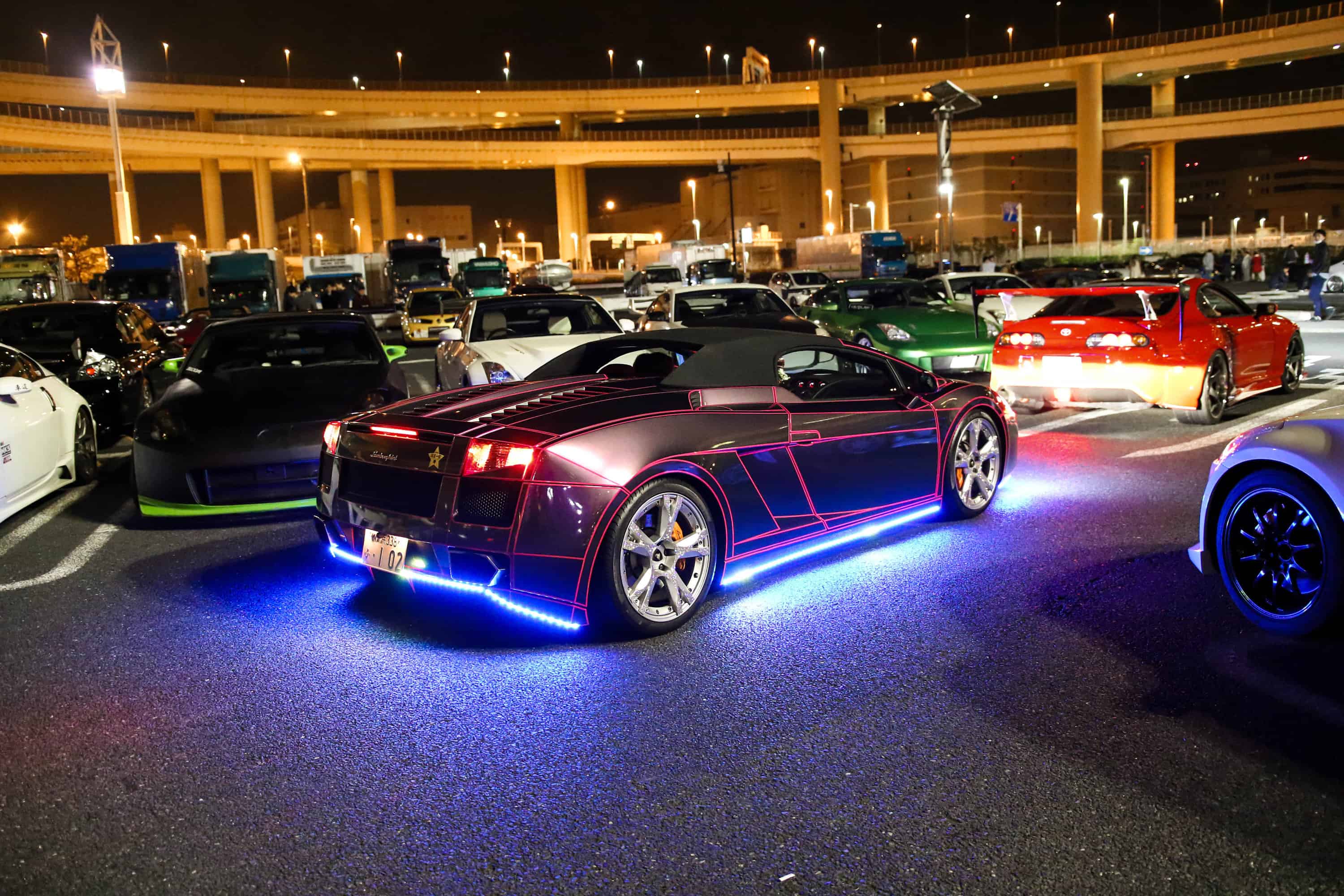Japan’s obsession with customized cars makes for incredible eye candy.
In the 2006 blockbuster “The Fast and the Furious: Tokyo Drift,” modified street racers such as a Mazda RX-8 and Nissan 350Z swerve at high speeds through the city’s streets and a plotline that, well, isn’t worth getting into here. That’s because truth is much more exciting than fiction.
On a typical Saturday night in Tokyo, you can see cars and trucks of various shapes, makes and models decked out with gleaming chrome exteriors; pulsing, multicolor LED and strobe-light treatments — and even flames shooting out the back.
Over-the-top details are the norm, and Japan’s customization culture extends to pretty much everything with a motor. Outlandish modifications can be found on everything from an affordable Kei car or truck to costly Lamborghini Aventadors. To see them, head to the Hakozaki Parking Area in Chuo City, Tokyo, on a Saturday night before the drivers disperse for joy rides starting at around midnight.
While most everyone else in the world who’d buy a collectible sportscar would wince at the thought of changing anything about it, Japanese custom-car petrol heads see their rides as blank canvases. They drive straight from the dealership to the garage and begin stripping out the typical luxury details in favor of even flashier refinements. It’s all about personality and showcasing individual style in a culture that, in most aspects of everyday life, values understated conformity. The idea is to take something that’s generally available and turn it into something completely original that everybody wants yet no one can have — because it’s uniquely yours.
The closest concept in America might be lowrider or monster-truck culture. (And there are plenty of customized 1970s lowriders to be found in Japan.) But Japanese custom culture isn’t about speed or utility, just style and expression.
Here’s a snapshot of the world of Japanese customization — from the affordable to the otherworldly — that you can expect to find cruising the late-night Tokyo streets. Fortunately, the lights on the cars make them easy to spot, and jet lag on arrival makes custom car-spotting one of the easiest and most instantly accessible touchpoints of Japanese culture.
Oni-Kyan

Cars that are modified with slanted, oversized wheels and tires are called oni kyan, or “demon camber” (camber refers to the angle of the wheel between the body and the ground.) While its origins come from the world of racecars, oni-kyan are more for looks than performance, embraced by car enthusiasts driving on Japan’s city streets for the vehicles’ head-turning aesthetic.
Kei Cars

This category of tiny, efficient, affordable cars is everywhere in Japan, manufactured by Honda, Suzuki and Nissan, to name just a few. The accessible price tag makes Kei cars an economical platform for customizers who want to express themselves and experiment with a range of approaches. From colors and graphics to wheel packages and engine modifications, the sky is the limit.
Dekotora Trucks

It’s a made-up word — a Japanese language play on “decorated trucks” — but that’d just be understating the art form since it truly merits a term all its own. Dekotora trucks are customized down to every last detail, and they can take years to create. The trend started after the release of 1970s movies featuring a character who drove an elaborate truck all over Japan — hobbyists took the idea and ran wild with it.
Luxury Supercars

Lamborghinis. Ferraris. Porsches. It’s safe to say that price and scarcity are not impediments to Japanese car customizers. From a hot-pink Lamborghini Diablo to a holographic Aventador (all spotted in the streets of Tokyo), these amped-up vehicles punctuate the city’s traffic.
Bōsōzoku

This is a term often applied broadly to customization culture, but it really started with customizing motorcycles in the 1950s. Bōsōzoku still includes motorcycles, which tend to be flashy and loud, but this style of modification also extends to cars with wide fenders, massive spoilers and a wide array of impractical — yet incredibly eye-catching — embellishments.

